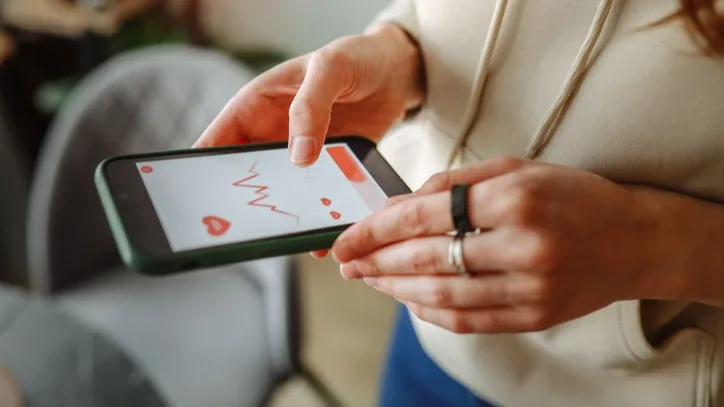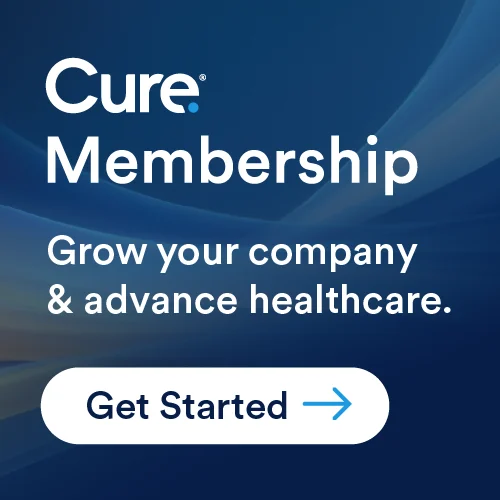
Overview
Founders behind Teal Health, Proov, Sunny, and Bloomlife reveal lessons from their FDA experiences, from unexpected reclassifications to trial redesigns to funding gaps.
Obtaining FDA clearance is rarely a straight line, but device entrepreneurs can build smarter timelines and avoid costly missteps when bringing innovations to market.
You’ve developed a product that could change — or even save — lives. However, before it can reach patients, the Food and Drug Administration must give a device a formal exemption, or review it for clearance. For many founders, that journey is rarely straightforward.
Entrepreneurs behind Teal Health, Proov, Sunny, and Bloomlife successfully navigated the FDA and shared what the regulatory process really takes at the recent SiS Women’s Health conference held at Cure.
From surprise reclassifications to months-long delays, their experiences underscored one key message: expect the unexpected and plan for it. Despite the hurdles, each founder agreed that the effort was worth it, not just for gaining approval to go to market but also for the credibility, trust, and safety their products now possess, having met the FDA's rigorous safety and efficacy guidelines.
Their insights yield seven tips in hindsight for what they might have done differently that could make the dealing with the FDA easier for startups.
Tip 1: Understand which FDA classification your product falls under.
Medical devices are regulated by the FDA and classified based on the level of risk they pose to patients. If you’re blazing a new trail with a novel device that has no existing predicate, even if poses a moderate risk, you’ll need to pursue a de novo pathway, which takes more time and requires more evidence for the FDA to review. Steel yourself for twists and turns if you’re on the de novo path.
“Being first at anything means you’re at the mercy of the ever-changing discoveries of the agency,” pointed out Trena Depel, Vice President of Regulatory, Clinical and Quality at Teal Health, a self-collection vaginal device for cervical cancer screening. “Their knowledge is evolving, so your tactics and strategy have to be flexible to evolve with them.”
For entrepreneurs improving on an existing technology, the FDA has three classes for regulating medical devices. Class I devices are considered low risk and are often exempt from premarket review requirements. Class II devices are moderate risk and typically undergo the 510(k) process, where you demonstrate that your product is equivalent enough to another device already cleared by the FDA, known as a predicate. Class III devices such as heart valves or stents, are high risk and require a rigorous Premarket Approval (PMA) process, which involves clinical data and detailed review.
Tip 2: Build FDA clearance into your fundraising timeline.
The traditional timeline for obtaining FDA clearance of a 510(k) submission, in theory, about six months. Companies focused on FemTech should plan for the possibility of 12 to 18 months, if not longer. Your timelines could readily be consumed with educating the FDA review team about your product, much like many FemTechs have had to educate their investors.
Cindy Belardo, Co-Founder and CEO of Sunny, the first FDA-cleared menstrual cup and applicator, recalled having to explain some basics to her reviewers: “They wanted to know ‘What is a menstrual cup? How's it different from a tampon? What is an applicator?’”
The key to planning your timeline is to build in buffers and secure enough funding to sustain the company for the duration. Also, expect delays. With the current staffing reductions at the FDA, founders should expect even more wrinkles in the process than before.
Tip 3: Enlist regulatory MedTech expertise.
To navigate the FDA process, it is advisable to work with a regulatory quality expert who can help determine the appropriate pathway and establish your Quality Management System (QMS). A QMS is required for the entire lifecycle of your medical device and will document every step of your development and approval process, as well as changes/improvements you might make after approval.
In addition to the hard skills, a quality expert can counsel you through the ups and downs that are all part of the FDA experience. “They’ll say, ‘I know you're frustrated. That's how these things work,” said Eric Dy, PhD, Co-Founder and CEO of Bloomlife.
When evaluating regulatory candidates, look for someone with established relationships at the FDA in the specific area of your device who understands the pathway you’re taking.
“If you're going de novo, don't hire somebody who's only done 510(k),” advised Theresa Neil, a usability expert who runs Femovate, a design capital program for FemTech founders.
Cultural compatibility and cost are also important considerations. Not all QMS people have the same level of comfort with risk. If you hire someone who operates “by the book” while you’re more agile or iterative, “you’re going to be fighting the whole time,” as Dy pointed out.
And while a contract QMS consultant may cost less in the short term, fees can add up if your review process takes longer than expected. Consider bringing regulatory in-house from the start so they’re part of your team, and you can manage your budget more closely.
Tip 4: Involve the FDA as early as possible.
Engaging with the FDA early in your product development journey can help you avoid mistakes that will cost you precious funding, as well as delays in the process. The agency can advise on your regulatory pathway, including the direction from the regulatory team for your collection and evaluation of pivotal data.
“You don’t want to have the FDA think too hard about it. They’re looking for this? Cool, check it off. They need this? Cool, check it off. You want to make the process go faster. Every time you delay it, you’re costing yourself time and money,” said Belardo.
Use the FDA’s voluntary Q-Submission (Q-Sub) program to get device development feedback and confirm expectations before officially submitting your application to increase the likelihood of a smooth review process.
But even with the FDA’s early involvement, don’t be surprised if the reviewers change their minds about an aspect of your product or call for more evidence. Amy Beckley, PhD, of Proov, an at-home hormone testing platform to help women facing infertility, reached out to the FDA before launching and was initially told her product qualified as Class I exempt. However, after launch, the FDA re-evaluated and determined that because the platform analyzed data to suggest potential causes for infertility, that constituted a new intended use, which required a new 510(k) review.
“After lots of tears, we finally said to ourselves, well, we don’t want to be a Class I hormone tester like everybody else. We want to be a diagnostic test with data that physicians can trust,” remembered Beckley.
Tip 5: Get creative if funding is tight.
The FDA requires evidence of your product’s safety, but that doesn’t necessarily mean you need to spend a lot of money, especially on human factors studies, usability testing, or other early-stage data collection.
When Proov conducted human factor studies, for example, the FDA required 100 people to read their instructions, said Beckley. “Because we had limited funding, we invited 100 women to our local rec center and gave them each $20 for participating. We weren’t breaking any rules. It was just a strategic, cost-effective way to do it.”
Work with your regulatory expert to make sure your data collection methods are compliant and properly documented.
Tip 6: If eligible, apply for breakthrough device designation to accelerate your process.
If your product provides an unmet need for life-threatening or debilitating diseases, you can apply for breakthrough status through the FDA’s Breakthrough Devices Program.
“When you have a breakthrough device designation, you rise to the top of the review pile,” noted Depel. You still need to provide robust evidence for your product, but you'll receive faster and more frequent feedback from the FDA as you work toward clearance..
Tip 7: Only submit what’s required.
The FDA doesn’t regulate every aspect of a new product, so don’t invite unnecessary scrutiny. If your product is a combination medical device with a digital component, such as an app, know that how the components work together may affect the level of regulatory review required.
For example, if a physical device is controlled by an app, it will be considered part of the system. It will require more detailed review or may need to be submitted as a device plus app package. However, digital companion apps that just read data from devices may not need to be submitted at all.
Consult with your regulatory expert to determine what you need to submit and focus on that alone to avoid introducing aspects that could cause delays.
Remember, it will be worth it in the end.
Founders in the middle of it may feel like they’re on an endless roller coaster ride. But as Beckley put it: “Now that I'm on the other side and I have the clearance, it's like my ‘Get Out of Jail Free’ card.”








